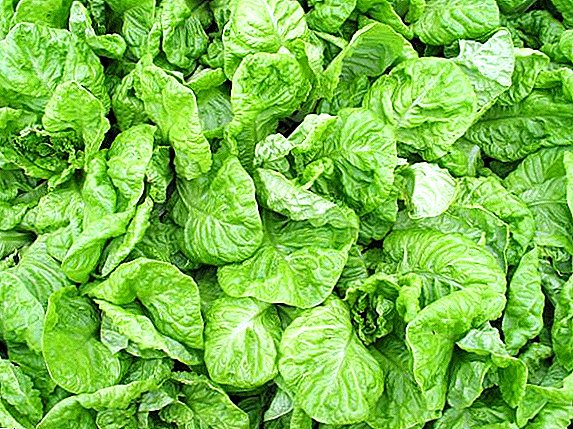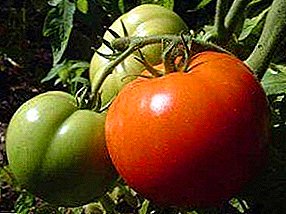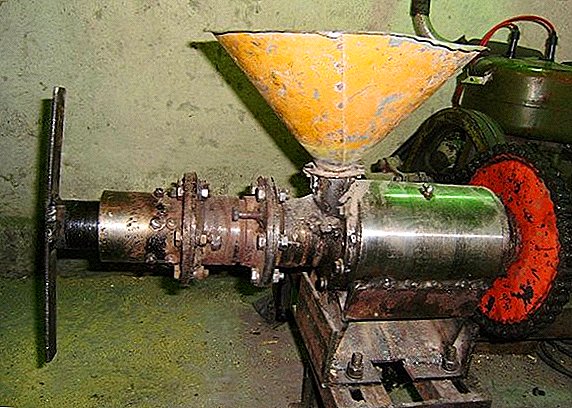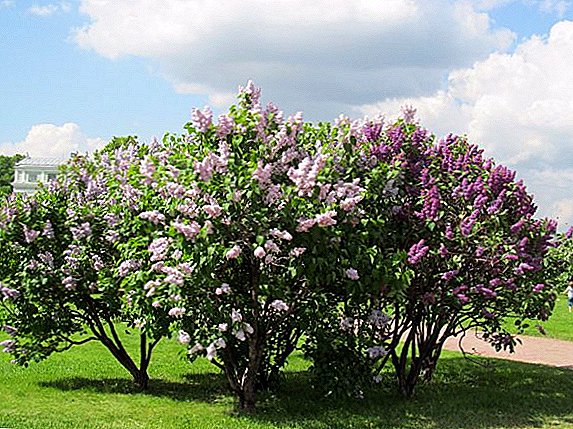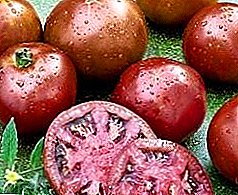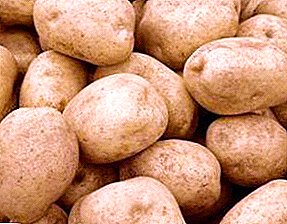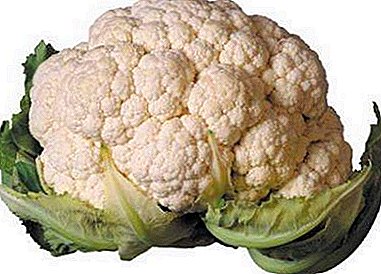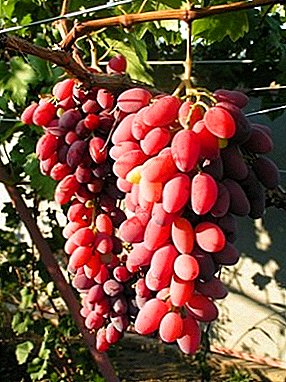
It is difficult to resist the exclamation of excitement when they offer you to eat skillfully grown grapes of the variety Zarevo.
Stunningly large berries, amazing pink and lilac color, pleasant taste without sugary sweetness will not leave anyone indifferent.
What kind is it?
Grape Glow is a pink dessert late variety grown for fresh consumption.
Possible names of grapes: Roadside, Sport-2. Pink varieties also include Angelica, Original, Gurzuf Pink.
Grape Glow: variety description
The vines are powerful, strongly expanding, maturing by 2/3. When planting chubukov should be aware that in the future one instance may require up to 2.5 meters of space on each side of the trunk. On one vine there are three - four dozen eyes.
The color of the bark on the vine itself is nut brown, on young layers it is light brown with yellow, the color of the cuttings of the brushes is light green. The leaves are rich green in color, five-fingered, with sharp notches along the edges and well-visible veins.
From 100% of the formed shoots 50-65% become fruitful.
 Clusters are drop-shaped, thinning downwards, loose, but without obvious "bald spots" due to the absence of berries. A typical mass of a ripe bunch is 700-800 g. Individual brushes can reach 2 kg of weight.
Clusters are drop-shaped, thinning downwards, loose, but without obvious "bald spots" due to the absence of berries. A typical mass of a ripe bunch is 700-800 g. Individual brushes can reach 2 kg of weight.
Delight, Merlot and Bazhena can boast large clusters.
Grapes:
- with dense skin;
- with weak prune bloom;
- papillary;
- large;
- elongated;
- rounded ends;
- half-ripe berries in the upper part are yellowish-green, in the lower part they are pink with a lilac shade at the end;
- well-ripened clusters consist of fruits of a rich pink color with a lilac-brown shimmer;
- the average mass of berries 10-14 g;
- the usual size of grapes is 38.5 x 23.1 mm;
- acidity 7-8 g / l;
- sugar content 15-16%;
- tasting score - 8.6 points.
Pulp of grapes Glow:
- no flavor "zest", but pleasant;
- sweet without fervor;
- greenish-pink;
- dense;
- juicy.
If you are interested in grapes with an unusual taste, then pay attention to Bulgaria, Gordey, Ruta and Chocolate.
A photo
Several photos of grapes "Glow":





Breeding history
It is assumed that the Zarevo grape variety was first bred by Moldova breeders.
Parental pair of grapes: Moldova x Cardinal.
Today, the variety has taken root in the farms of the southern regions of the Russian Federation and Ukraine, since a long warm period is necessary for gathering berries with sufficient sweetness, which is impossible in regions with an early, rainy and cold autumn.
Care features
 With timely removal shows good portability and keeping quality.
With timely removal shows good portability and keeping quality.
It differs from other grape varieties:
- on the coefficient of fruiting - 1-1.3;
- in terms of critically low temperature (frost resistance): up to - 220C;
- tendency to cracking with an excess of moisture in the soil;
- mediocre resistance to gray rot, false and true powdery mildew, moderate to anthracnose.
Prone to cracking and Dunav, Gift Zaporozhye and Victoria.
- timely normalize the clusters, which will favorably affect the glucose content in fruits;
- in case of artificial irrigation, one should be especially careful during the ripening period of the berries - they do not tolerate the slightest overflow and crack;
- premature harvest of the crop is reflected in the sweetness of the berries (the taste will be sour).
Favorable climatic conditions for a good harvest:
- no precipitation during the flowering period;
- moderately hot summer;
- dry and warm lingering autumn with most nice days in September and October.
Hadji Murat, Husayne White and Montepulciano also prefer heat.
Diseases and pests
The vine loses immunity to pathogenic fungi if it is darkened by neighboring plants, a building, and is located on a site with reduced air flow.
When signs of mildew develop (oily spots on the leaves and white bloom at the site of the lesion, but on the back side, white "flour" on the hands with flowers or ovaries), apply:
- removal of damaged parts and subsequent incineration;
- treatment with drugs (Kuproksat, Bordeaux mixture, copper chlorine, Antracol).
Prevention and such common grape diseases as oidium, various types of rot, anthracnose, bacteriosis, and chlorosis may be required.
 Frequent pest on the vines - grape leafworm. Its caterpillars with the same voracity deal with flower buds, buds, young leaves and ovaries.
Frequent pest on the vines - grape leafworm. Its caterpillars with the same voracity deal with flower buds, buds, young leaves and ovaries.
It is possible to foresee an attack of a pest when its parents appear - butterflies with a yellowish pair of front wings, decorated with light brown stripes, and rear ones painted in grayish color.
Preventive and radical measures against the caterpillar of this species:
- burning of fallen leaves, fallen bark and cut off layers;
- spraying with Fury's solution, Zolon, Bi-58, Talstar 12 days after the summer of butterflies. The procedure is repeated after the same period of time after the first spraying.
According to some gardeners who are fond of growing grapes, The glow is quite capricious representative of the culture..
Without control over the amount of water absorbed by the vine, all the work of spraying, feeding, pruning the bush can not pay off: just one good rain during the ripening of the clusters, as they will immediately be ready to turn into a sponge.
However, advanced farmers who have built up good drainage systems on the plots, even the weather will not be able to interfere with pleasing themselves and their loved ones with the beautiful Glow.
We offer you a short video about the sort described above:


